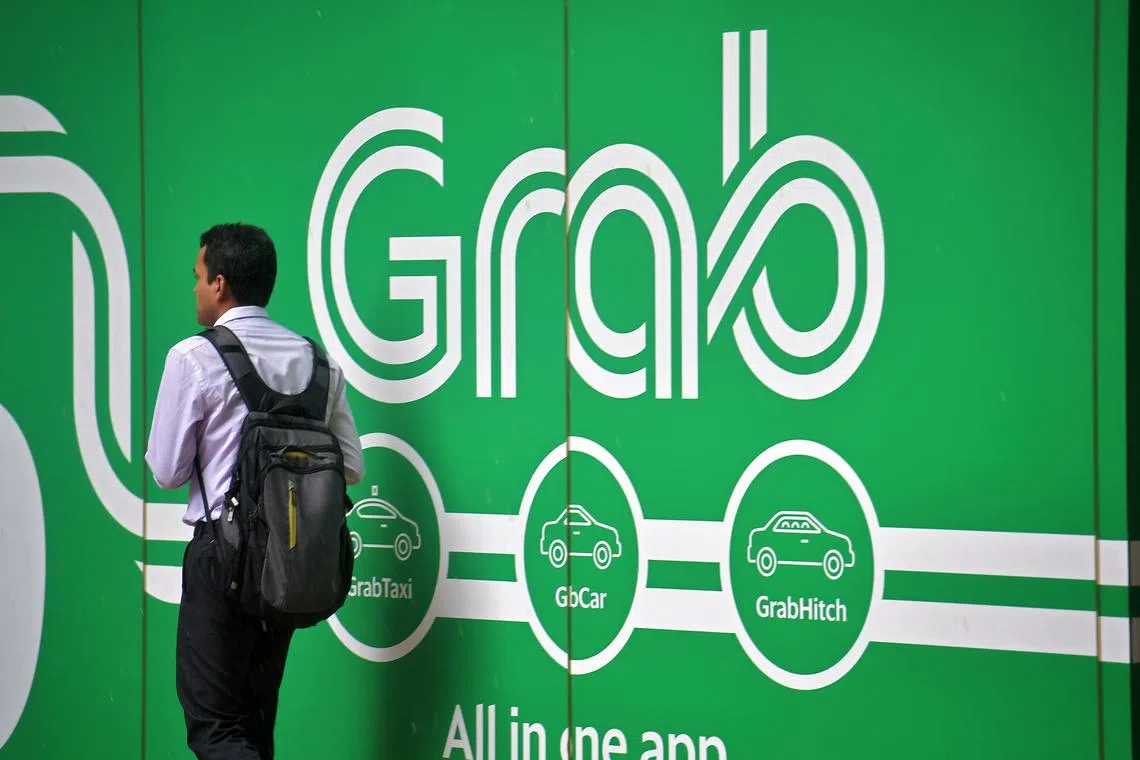Grab’s Q3 net loss narrows to $449m as revenue more than doubles
Sign up now: Get ST's newsletters delivered to your inbox

On the back of the positive showing, Grab has lifted its FY2022 revenue guidance to between US$1.32 billion and US$1.35 billion.
PHOTO: ST FILE
Sharanya Pillai
Follow topic:
SINGAPORE - South-east Asian on-demand player Grab narrowed its net loss to US$327 million (S$449 million) for the third quarter ended September, an improvement from the US$970 million loss in 2021. This was mainly due to the elimination of non-cash interest expenses from Grab’s convertible redeemable preference shares upon its December 2021 listing.
Revenue for the company grew 143 per cent to US$382 million in the third quarter, lifted by a doubling in mobility revenue and 250 per cent growth in deliveries’ revenue year on year. This came as gross merchandise value (GMV) was up 26 per cent to US$5.1 billion.
With this set of earnings, Grab’s deliveries segment has hit positive adjusted earnings before interest, taxes, depreciation and amortisation (Ebitda) for the first time, three quarters ahead of previous guidance. This was possible due to the optimisation of incentive spend and contributions from its Malaysian retail chain, Jaya Grocer.
The food-delivery sub-segment also turned adjusted-Ebitda positive in the third quarter, two quarters ahead of previous guidance.
On the back of the positive showing, Grab has lifted its FY2022 revenue guidance to between US$1.32 billion and US$1.35 billion, up from the US$1.25 billion to US$1.3 billion range. It has also revised its second-half 2022 adjusted Ebitda guidance to negative US$315 million, an improvement from negative US$380 million.
Under its cash-preservation strategy, Grab will repurchase up to US$750 million of an outstanding US$2 billion term loan. The facility was issued in January 2021 and has a tenor of five years.
The repurchase is expected to create significant interest expense savings, Grab said, adding that it had US$5.3 billion in net cash liquidity as at end-September, providing an “ample net cash buffer”. The company expects to hit group-adjusted Ebitda break-even in the second half of 2024.
The continued easing of Covid-19 curbs, as well as efforts to improve driver supply, lifted Grab’s third-quarter mobility revenue up 101 per cent to US$176 million. The segment’s adjusted Ebitda was likewise up 112 per cent to US$135 million. Driver numbers are, however, still short of pre-pandemic levels, with the monthly average number of active drivers in the third quarter at 80 per cent of that of the fourth quarter of 2019.
In the deliveries segment, the focus on higher-quality GMV transactions and contributions from Jaya Grocer sent revenue up 250 per cent to US$171 million. Grab also posted a commission rate of 21.2 per cent, up from 18.2 per cent in 2021. This brought the segment into the black, with an adjusted Ebitda of US$9 million, in contrast to the US$22 million adjusted Ebitda loss in 2021.
The financial services segment, however, sank deeper into the red, with a US$104 million adjusted Ebitda loss, wider than the year-ago US$76 million adjusted Ebitda loss. This came despite revenue having risen 44 per cent to US$20 million. The bottom line was weighed down by expenses in digibank operations.
Nevertheless, Grab highlighted that its loan disbursements are up 121 per cent year on year. The number of active drivers with a loan from Grab has more than doubled, while non-performing loans are in “low single digits”.
Revenue for the company’s enterprise and new initiatives unit, which includes its nascent GrabMaps business, more than doubled to US$15 million, driven by contributions from advertising services. The segment’s adjusted Ebitda was US$8 million, up from US$1 million in 2021.
Grab co-founder Anthony Tan said the third-quarter results show the company’s ability to drive growth and profitability at the same time, with deliveries’ break-even coming earlier than expected. “We accomplished this by staying laser-focused on our cost structure and incentives, while innovating on services that increase synergies within our super app ecosystem to promote transaction frequency, user retention and engagement,” he said. THE BUSINESS TIMES

